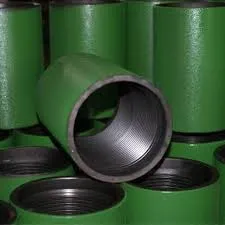- Afrikaans
- Albanian
- Amharic
- Arabic
- Armenian
- Azerbaijani
- Basque
- Belarusian
- Bengali
- Bosnian
- Bulgarian
- Catalan
- Cebuano
- Corsican
- Croatian
- Czech
- Danish
- Dutch
- English
- Esperanto
- Estonian
- Finnish
- French
- Frisian
- Galician
- Georgian
- German
- Greek
- Gujarati
- Haitian Creole
- hausa
- hawaiian
- Hebrew
- Hindi
- Miao
- Hungarian
- Icelandic
- igbo
- Indonesian
- irish
- Italian
- Japanese
- Javanese
- Kannada
- kazakh
- Khmer
- Rwandese
- Korean
- Kurdish
- Kyrgyz
- Lao
- Latin
- Latvian
- Lithuanian
- Luxembourgish
- Macedonian
- Malgashi
- Malay
- Malayalam
- Maltese
- Maori
- Marathi
- Mongolian
- Myanmar
- Nepali
- Norwegian
- Norwegian
- Occitan
- Pashto
- Persian
- Polish
- Portuguese
- Punjabi
- Romanian
- Russian
- Samoan
- Scottish Gaelic
- Serbian
- Sesotho
- Shona
- Sindhi
- Sinhala
- Slovak
- Slovenian
- Somali
- Spanish
- Sundanese
- Swahili
- Swedish
- Tagalog
- Tajik
- Tamil
- Tatar
- Telugu
- Thai
- Turkish
- Turkmen
- Ukrainian
- Urdu
- Uighur
- Uzbek
- Vietnamese
- Welsh
- Bantu
- Yiddish
- Yoruba
- Zulu
pup joint specifications
Understanding Pup Joint Specifications
Pup joints are specialized pipe segments used in various industries, particularly in oil and gas drilling operations. They are essential components that link larger pipe sections and serve to adjust the length of the drill string or tubing. The specifications for pup joints are critical for ensuring they meet industry standards and performance requirements. This article delves into the key elements of pup joint specifications, their importance, and applications.
Definition and Purpose
A pup joint is a short length of pipe, usually ranging from 2 to 10 feet, that is used to extend or complete a string of pipes in drilling operations. They come into play when specific lengths of tubing or casing are necessary but cannot be met with standard pipe lengths. Pup joints allow for more flexible arrangements in the drilling setup, enabling operators to optimize their configurations as conditions change.
Key Specifications
The specifications for pup joints include several critical parameters, each contributing to the overall performance and safety of the drilling operations
1. Material Composition Pup joints are commonly manufactured from high-strength steel alloys. The material must possess excellent tensile strength, corrosion resistance, and impact toughness, making it suitable for the demanding conditions of drilling operations.
2. Dimensions The outer diameter (OD) and wall thickness of pup joints are paramount for compatibility with the surrounding pipe sections. Typically, pup joints are available in various sizes to match standard tubular dimensions, such as 2 3/8” to 20” OD.
3. Thread Specifications The ends of the pup joints are often equipped with specific thread types, such as API (American Petroleum Institute) or premium threads, which are vital for ensuring a secure connection to other pipe sections. Proper thread specifications help to prevent leaks and potential failures during operation.
4. Pressure Rating Pup joints are assigned a pressure rating based on their design and material characteristics. This rating indicates the maximum pressure the joint can withstand while maintaining structural integrity. It is essential to select pup joints with adequate pressure ratings for the specific application to maintain safety and prevent catastrophic failures.
pup joint specifications

5. Length The length of pup joints can vary based on the needs of the drilling operation. Common lengths are 2, 3, 5, and 10 feet. Custom lengths can also be manufactured, depending on the project requirements.
6. End Treatment The ends of pup joints might require specific treatments to enhance performance. Depending on the application, options such as coating for corrosion resistance or special heat treatment for increased strength may be applied.
Importance of Adhering to Specifications
Adhering to pup joint specifications is crucial for several reasons. Firstly, it ensures the safety of drilling operations. Without proper specifications, the risk of equipment failure increases significantly, leading to potential accidents, environmental damage, and financial loss.
Secondly, compliance with industry standards, such as those set by the API or ISO, is essential for maintaining quality control. These standards help in assuring that all components, including pup joints, are manufactured to meet rigorous safety and performance criteria.
Lastly, proper specifications improve operational efficiency. By ensuring all components are compatible and reliable, drilling operations can proceed without unnecessary delays or complications.
Applications in the Industry
Pup joints are used in various applications beyond oil and gas drilling. They are also found in well intervention, workover operations, and in the completion phase of wells. In addition, pup joints are utilized in the construction of pipelines, where they help to accommodate bends or changes in direction.
Conclusion
The specifications of pup joints are an integral part of the drilling and piping industries. Understanding material properties, dimensions, thread types, pressure ratings, and other critical parameters can greatly influence the overall success and safety of drilling operations. As technology advances and industry standards evolve, ongoing attention to pup joint specifications will remain essential for ensuring optimal performance in the field.
-
Tubing Pup Joints: Essential Components for Oil and Gas OperationsNewsJul.10,2025
-
Pup Joints: Essential Components for Reliable Drilling OperationsNewsJul.10,2025
-
Pipe Couplings: Connecting Your World EfficientlyNewsJul.10,2025
-
Mastering Oilfield Operations with Quality Tubing and CasingNewsJul.10,2025
-
High-Quality Casing Couplings for Every NeedNewsJul.10,2025
-
Boost Your Drilling Efficiency with Premium Crossover Tools & Seating NipplesNewsJul.10,2025







